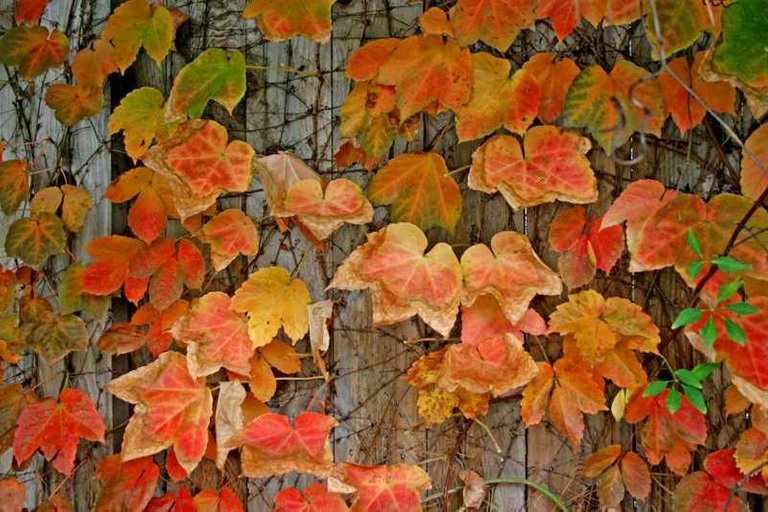Noteworthy Characteristics
Parthenocissus tricuspidata, commonly called Boston ivy, is a rapid-growing, deciduous, woody vine that typically grows 30-50’ long or more. It is a vigorous tendril climber that needs no support. It clings to surfaces (e.g., brick, stone or wood walls) by adhesive holdfasts (also called sucker disks) located at the tendril ends. Although native to China and Japan, this ivy has been widely planted in the U.S., and is the ivy that covers the walls of many college/university buildings, giving rise in the Northeast to the name Ivy League. Species plants have dark green leaves (to 4-8” wide) in variable shapes but usually three lobed (sometimes in three leaflets). Greenish white flowers in late spring to early summer appear in the upper leaf axils, but are generally hidden by the foliage and are ornamentally insignificant. Flowers give way to blue-black berries (to 1/3” diameter) which are also hidden by the foliage and often not visible until autumn leaf drop. Birds eat the berries. Foliage turns scarlet red to scarlet purple in fall. Foliage is semi-evergreen in warm climates.
Synonymous with and formerly known as Ampelopsis tricuspidata.
Genus name comes from the Greek words parthenos meaning a virgin and kissos meaning ivy.

Specific epithet comes from the Latin words tri meaning three and cuspidatus meaning with a sharp point in reference to each plant leaf having three sharply-pointed lobes.

Problems
No serious insect or disease problems. Mildews, leaf spots, canker and wilt may occur. Potential insect pests include beetles, scale and leaf hoppers. Once attached to the side of a building or wall, this vine becomes difficult to remove and will damage painted surfaces and leave residues. This vine may invasively spread to nearby unmanaged areas.
Garden Uses
Excellent covering for walls, trellises, arbors or fences. May also be grown on the ground to cover old stumps, rock piles or other eyesores or for erosion control on slopes.